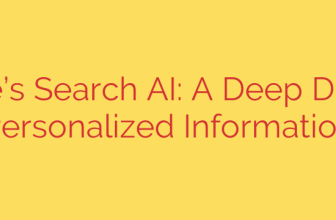
The landscape of cyber threats is constantly shifting, making robust enterprise defense more critical than ever. Among the most pervasive and damaging risks today is ransomware. These attacks can cripple operations, lead to significant financial losses, and severely damage reputation. While traditional cybersecurity measures like firewalls and signature-based antivirus remain essential, they often struggle to keep pace with the speed and sophistication of modern ransomware variants, many of which employ novel techniques to evade detection.
Successfully combating these advanced threats requires a more intelligent and proactive approach. This is where Artificial Intelligence (AI) emerges as a game-changer in enterprise security. AI’s ability to process and analyze vast quantities of data at speeds impossible for humans provides unprecedented capabilities for identifying suspicious patterns and anomalies that might indicate an impending attack or active breach.
By leveraging machine learning algorithms, AI systems can learn from past attack data and normal network behavior to predict potential threats before they fully materialize. This includes recognizing subtle deviations in user or system activity that could signal the reconnaissance or staging phases of a ransomware deployment. This predictive analysis allows security teams to intervene much earlier in the kill chain, potentially preventing the ransomware from encrypting critical data.
Furthermore, AI significantly enhances detection capabilities against zero-day threats – ransomware that hasn’t been seen before and therefore lacks a known signature. AI can identify malicious intent based on behavioral analysis, observing how processes interact, files are accessed, and network connections are made, flagging activities that deviate from established norms, regardless of whether the specific malware signature is known.
Beyond detection, AI assists in automating and accelerating incident response. When a potential threat is detected, AI can help triage alerts, identify affected systems, and even initiate containment actions autonomously, reducing the time attackers have to spread laterally or cause further damage. This faster response time is paramount in minimizing the impact of a successful attack.
Implementing AI for ransomware defense means building a more resilient security posture. It provides advanced visibility, improves the accuracy of threat identification, and enables a more adaptive defense that can evolve alongside the threats themselves. While AI is a powerful tool, it works best as part of a comprehensive, multi-layered cybersecurity strategy that includes strong policies, employee training, regular backups, and traditional security controls. Adopting AI is not just an upgrade; it’s a necessary evolution for enterprises serious about protecting their digital assets in the face of ever-increasing ransomware risks.
Source: https://www.helpnetsecurity.com/2025/06/06/ransomware-threats-concern/








